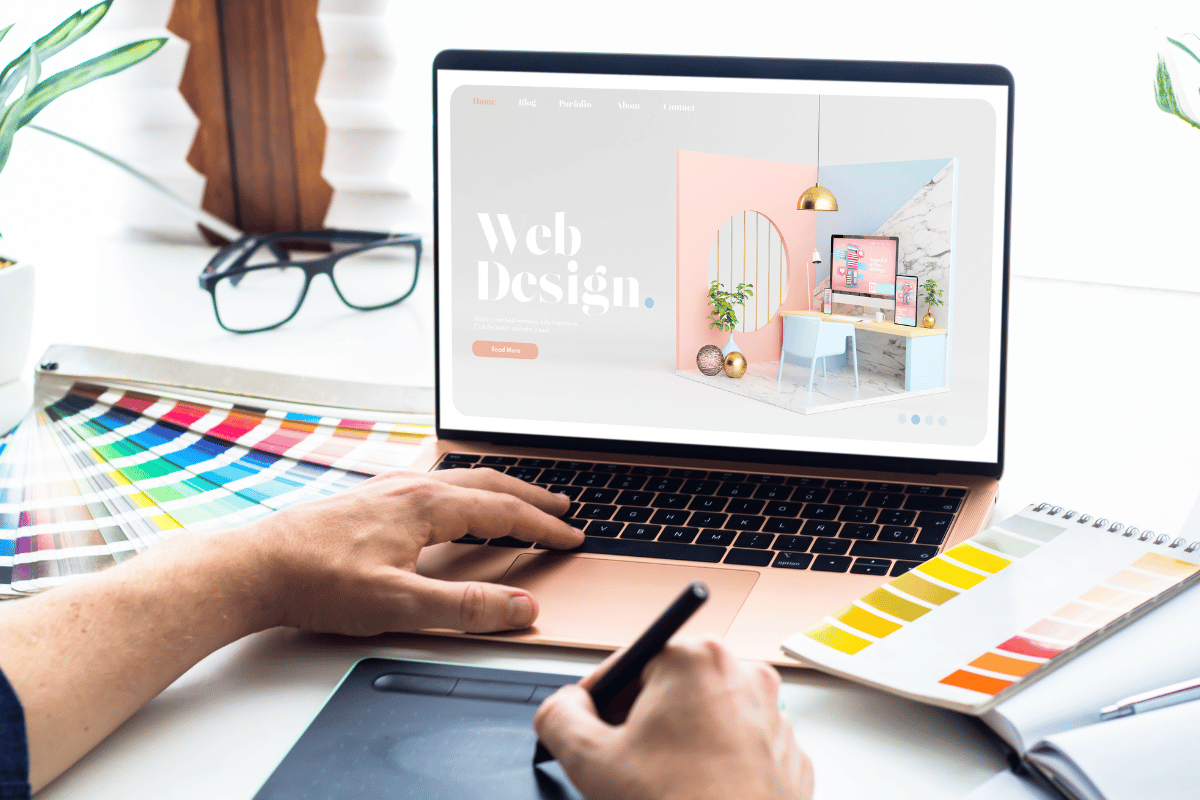What is Web Design? A Comprehensive Guide
In today’s digital landscape, the term web design plays a pivotal role in how businesses and individuals create and maintain their online presence. But what exactly does web design entail? To put it simply, web design refers to the process of planning, conceptualizing, and arranging content intended for the internet. More than just aesthetics, web design encompasses functionality, user experience (UX), and accessibility. This guide delves deep into the world of web design, covering its core elements, importance, and how it contributes to the success of a website.
Understanding the Basics of Web Design
1. The Essence of Web Design
Web design is a multidisciplinary field that involves the creation of digital environments that facilitate and encourage human activity; reflect or adapt to individual voices and content; and change gracefully over time while always retaining their aesthetic appeal. The goal is to craft a website that not only looks good but also provides a seamless user experience. A well-designed website is intuitive, meaning users can navigate it easily without feeling lost or confused.
2. Core Elements of Web Design
A successful web design is built upon several key elements:
- Layout: The layout is the structure of a website, determining how content is displayed on the page. It includes the arrangement of headers, footers, menus, and other navigational elements. A well-thought-out layout ensures a balanced and aesthetically pleasing design that is easy to navigate.
- Color Scheme: The choice of colors in web design is crucial as it influences how users perceive the website. Colors can evoke emotions and set the tone of the website, making it either professional, playful, or calming. Designers often use a limited color palette to maintain consistency across the site.
- Typography: Typography refers to the style and appearance of the text on a website. The choice of fonts, their sizes, and spacing can significantly impact readability and the overall aesthetic of the site. Good typography ensures that the content is easy to read and aligns with the website’s brand identity.
- Imagery: Images, videos, and other forms of multimedia are essential components of web design. High-quality visuals can capture attention, convey messages quickly, and enhance the user experience. However, they must be optimized for web use to ensure they do not slow down the site.
- Navigation: Navigation is the system that allows users to move around the website. It should be simple, intuitive, and consistent across all pages. Good navigation reduces bounce rates and improves the overall user experience by making it easy for users to find the information they need.
3. The Role of User Experience (UX) in Web Design
User experience is at the heart of effective web design. UX design focuses on the overall feel of the website and aims to make it user-friendly. It involves understanding the needs and behaviors of the target audience and creating a site that meets those needs effectively.
- Usability: Usability is a critical component of UX design. A website must be easy to use, with clear instructions and an intuitive interface. This includes having responsive design elements that work well on different devices, from desktops to smartphones.
- Accessibility: Accessibility ensures that a website can be used by everyone, including individuals with disabilities. This involves designing websites that are compatible with screen readers, using alt text for images, and ensuring that all interactive elements are navigable via keyboard.
- Interactivity: A good web design encourages interaction. This could be through clickable buttons, forms, or other interactive elements that engage users and keep them on the site longer.
4. The Importance of Responsive Design
Responsive design is no longer a luxury but a necessity in today’s multi-device world. A responsive website adjusts its layout and content based on the screen size and resolution of the device it’s being viewed on. This means whether a user is on a desktop, tablet, or smartphone, the website will provide an optimal viewing experience.
- Mobile-Friendliness: With the majority of internet users accessing websites through mobile devices, it’s crucial that your web design is mobile-friendly. This includes having a layout that adapts to smaller screens, touch-friendly navigation, and fast load times.
- Cross-Browser Compatibility: Websites should function properly across all major browsers, including Chrome, Firefox, Safari, and Edge. This ensures that users have a consistent experience regardless of the browser they use.
Advanced Concepts in Web Design
1. Visual Hierarchy
Visual hierarchy is the arrangement of elements in a way that signifies importance. It guides the user’s eye to where the most critical information is, often using size, color, contrast, and positioning. For example, headings are usually larger and bolder to draw attention, while less important information is displayed in smaller fonts or subdued colors.
2. White Space and Minimalism
White space, also known as negative space, refers to the empty areas between design elements. Proper use of white space can make a website look more organized and less cluttered, allowing users to focus on the content. Minimalist design, which uses a lot of white space, has become popular due to its clean, modern aesthetic and its ability to enhance the user experience.
3. Grid Systems
Grid systems are frameworks that help designers structure content in a clean and organized way. They provide a set of guidelines for how elements should be placed on a page, ensuring consistency and alignment. Grids are especially useful in responsive design, where they help maintain balance across different screen sizes.
4. The Impact of Load Time on Web Design
A website’s load time is a critical factor in user retention and SEO rankings. If a website takes too long to load, users are likely to leave before even seeing the content. Web designers must optimize images, minify code, and leverage browser caching to ensure fast load times.
5. SEO and Web Design
Search Engine Optimization (SEO) is intricately linked with web design. The way a website is designed can significantly impact its search engine rankings. Factors such as mobile-friendliness, load speed, and the use of headers and meta tags are all important for SEO.
- On-Page SEO: This involves optimizing individual web pages to rank higher in search engines. It includes using relevant keywords, optimizing title tags and meta descriptions, and ensuring that content is high quality and valuable to users.
- Technical SEO: Technical SEO focuses on the backend of your website, such as site speed, XML sitemaps, and the structure of your website’s code. A technically sound website is easier for search engines to crawl and index, leading to better rankings.
6. Future Trends in Web Design
The field of web design is constantly evolving, with new trends emerging regularly. Here are a few that are shaping the future of web design:
- Dark Mode: Increasingly popular, dark mode designs offer a visually appealing alternative to the traditional light themes, reducing eye strain and conserving battery life on mobile devices.
- Micro-Interactions: These are small animations or design elements that provide feedback to the user. Examples include a button changing color when hovered over or a form providing real-time validation. Micro-interactions can enhance UX by making the website more interactive and engaging.
- Artificial Intelligence (AI) and Chatbots: AI is becoming more integrated into web design, particularly through the use of chatbots. These tools can provide instant customer service, guide users through the website, and collect data to improve the overall experience.
Conclusion
Web design is a multifaceted discipline that combines creativity, technology, and user-centric thinking. By understanding and applying the principles of effective web design, businesses can create websites that not only attract visitors but also convert them into loyal customers. Whether you are a designer, developer, or business owner, keeping up with the latest trends and best practices in web design is crucial for online success.







